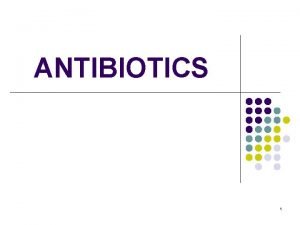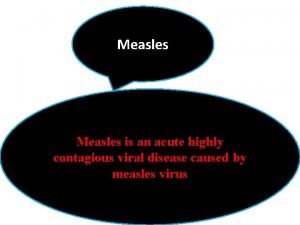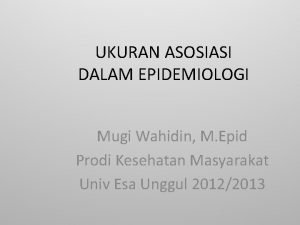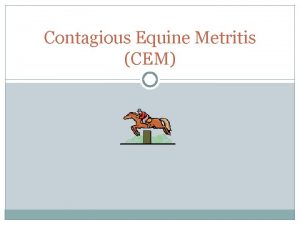Contagious ecthyma Contagious Ecthyma Overview Organism History Epidemiology























- Slides: 23

Contagious ecthyma Contagious Ecthyma

Overview Organism History Epidemiology Transmission Disease in Humans Disease in Animals Prevention and Control

The Organism

The Organism Orf virus Genus Parapoxvirus Family Poxviridae Viability One month on wool/hides after healed Up to 12 years in lesion crusts Resistant to inactivation lesions

History

History Orf described in animals Sheep: 1787 Goats: 1879 Orf described in humans 1923

Epidemiology

Geographic Distribution Found worldwide in sheep-raising countries United States Western states most affected Orf reported on 40% of U. S. sheep operations

Who Is At Risk? Close contact with sheep/goats Herders Sheep-shearers Veterinarians Butchers Abattoir workers

Transmission

Transmission Virus found in skin lesions/scabs Enters skin through cuts, abrasions Direct contact Fomites Healthy animals may be carriers Vaccines Contain live virus May infect humans

Disease in Humans

Clinical Signs Usually single skin lesion Small, firm papule Fingers or hands Eventually lesion by crust covered Often resolves spontaneously Immunosuppressed people at greater risk for complications

Diagnosis Electron microscopy Biopsy PCR Histopathology Virus isolation Serology, antigen detection Used in research only

Treatment Usually self-limiting Supportive care Wound dressings Local antiseptics Finger immobilization Antibiotics for secondary infections Surgery (large lesions) Cryotherapy

Disease in Animals

Species Affected Sheep Goats Alpacas Camels Reindeer Musk oxen Bighorn sheep Deer Prong-horn antelope Wapiti Dogs Ingestion of infected carcasses

Clinical Signs Papules, pustules, vesicles Lips, nose, ears, eyelids, mouth Progress to thick, friable scabs Lesions very painful Usually resolves weeks More severe in goats in 1 to 4 Boer

Diagnosis Often diagnosed symptomatically Confirmation Electron microscopy (scabs) PCR Other tests (less common) Virus isolation Serology ELISA

Treatment No specific treatment Intraoral lesions Diathermy Cryosurgery Insect repellents Antibiotics Secondary infections Supportive care

Prevention and Control

Prevention in Humans Avoid contact with infected animals, scabs/crusts, wool, and hides Especially if immunosuppressed Wear gloves When handling susceptible animals When vaccinating Wash hands

Prevention in Animals Quarantine new animals Keep equipment/fomites clean Vaccination Live virus vaccine Only used where infections have occurred in the past Isolate recently vaccinated animals Difficult to eradicate
 Food chains food webs and energy pyramid worksheet
Food chains food webs and energy pyramid worksheet Ecthyma gangreneux d'ehlers
Ecthyma gangreneux d'ehlers Impetigo contagiosa pictures
Impetigo contagiosa pictures Vanessa pedroza
Vanessa pedroza Hierarchical diffusion
Hierarchical diffusion Diffusion the process of introducing cultural
Diffusion the process of introducing cultural Attitude is contagious is yours worth catching
Attitude is contagious is yours worth catching Relocation and expansion diffusion
Relocation and expansion diffusion Rituals examples
Rituals examples Reverse hierarchical diffusion examples
Reverse hierarchical diffusion examples Example of contagious diffusion
Example of contagious diffusion Are voodoo dolls contagious magic
Are voodoo dolls contagious magic Contagious diffusion
Contagious diffusion Is protracted bacterial bronchitis contagious
Is protracted bacterial bronchitis contagious Contoh difusi penampungan
Contoh difusi penampungan Spatial diffusion definition
Spatial diffusion definition Meningitis test
Meningitis test An acute highly contagious viral disease
An acute highly contagious viral disease Pfapa
Pfapa Becoming a contagious christian video study download
Becoming a contagious christian video study download Perbedaan relative risk dan odds ratio
Perbedaan relative risk dan odds ratio Advantages and disadvantages of nutritional epidemiology
Advantages and disadvantages of nutritional epidemiology Logistic regression epidemiology
Logistic regression epidemiology Incidence density formula
Incidence density formula













































